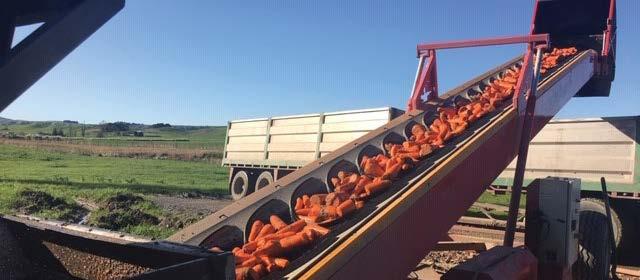
18 minute read
NEW VEGETABLE WASHING SYSTEM
NEW MOBILE VEGETABLE WASHING
SYSTEM RECYCLES 95 PERCENT OF THE WATER FOR CARROT FARMER
Bonnie Flaws
Washed carrots loaded up for transportation to the McCain’s processing plant
Hugh Ritchie – Hawke’s Bay cropper, sheep and beef farmer, and Horticulture New Zealand board member – has used Kiwi ingenuity alongside European technology to recycle vast amounts of water in his mobile, post-harvest carrot washing operation, which can be moved from paddock to paddock.
Previously, after harvesting his carrots, Hugh would ship truckloads of carrots to a plant in Hastings where they would get washed. From there the carrots would be shipped to McCain’s processing plant and the sediment that came off in the washing process was trucked back to the farm to be put back on the paddock. Now, using high tech equipment from the Netherlands, including a water recycling unit, a modified 40-foot shipping container for water storage as well as an old potato tumbler from McCain’s, Hugh retains the majority of water used during the washing process. He also siphons off the dirt sediment into ponds to be reapplied to the paddock once any water has drained away. “I knew we had to do something better than just letting the water run away. The flume uses about 20 cubic metres of water an hour to keep it flushed and fresh and then we are probably using 10 litres a second through the sprays.“ The washer could be fed with new water that then runs off, or as Hugh has done, recycled to use throughout the harvest.
“Because it is mobile, we can take it to the paddock where the carrots are being harvested. You can see all the dirt coming out. Rather than carting it to Hastings and then bringing it all back again, we can do it in the paddock and leave the dirt where the dirt needs to be.“
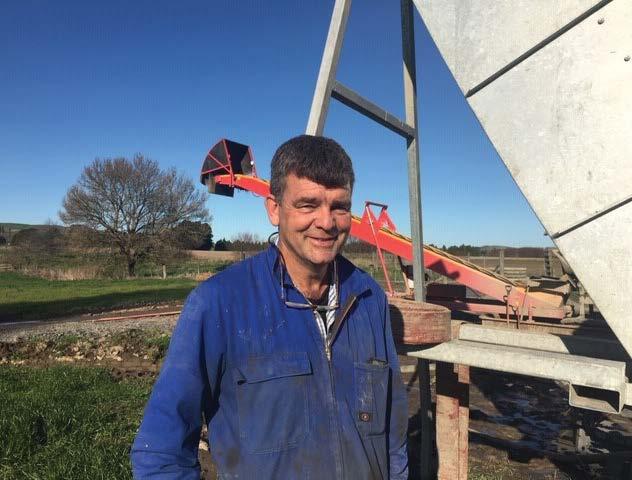
Hugh Ritchie has put together a washing system that uses 95 percent less water
When the flume was imported from Europe during Covid-19, Hugh was told that it was a low water use unit. “Well, I suppose 20 cubic metres an hour is low water use if other things use 50 cubic metres an hour. But what we used was not even close, so we had all sorts of blockages and problems. So we then had to go to a much higher water use to keep that all flushed. The pumps don’t like pumping high dirt content, even just the dirty silty water. “So all of the water comes out of the sprays and comes out of the top through a geotech cloth and all the organic matter gets taken out and put on the side.“
Hugh’s number eight wire mentality came in handy when he decided to modify the shipping container that the equipment had arrived in to work as the water storage tank, rather than import one. The tank is operated by computer which controls a complex system of augers and siphons, and times the release of silt into the collection ponds. The water collects in the tank and gets pumped through for re-use. Improvements to the pumps are ongoing so that they can handle the volume of silt build-up without running out of oomph. “So that means the water can last up to two to three weeks, without changing it. All the water that we get to re-use flows into gutters that are up high, and everything below that is a settling area,“ Hugh says. How much water is he saving? Hugh calculates that without the recycling system he would be using about 500,000 litres a day, but now uses just 25,000 litres (five percent). “We don’t need a consent with that. There is no discharge and it can be mobile.“
The washing set-up has probably set him back $400,000 all up. And over the past few seasons, with continued improvements being made along the way, Hugh estimates the capital outlay will have now been covered by the fees he has saved for washing.
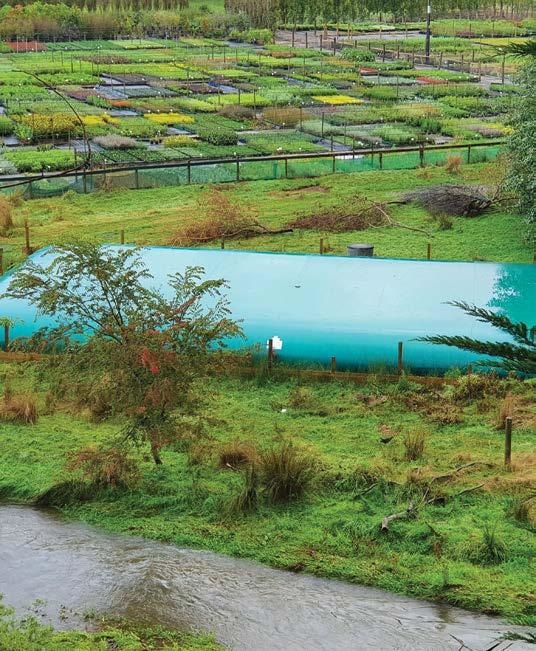
www.precisede.co.nz Angus Clarke 027 498 3146 Allan Crouch 021 909 463
DOWNSIZING CROPS, BUT PASSION
FOR TOMATOES REMAINS STRONG
Photography: Helena O’Neill
Eddie Paul checks tomato plants in the plastic glasshouse at the Te Puna property near Tauranga
With three decades of growing tomatoes under their belts, Te Puna couple Eddie and Lyn are a familiar fixture at Tauranga Farmers’ Market. HELENA O’NEILL talks to Lyn about scaling back their commercial operation into a more modest business while remaining enthusiastic about growing fresh produce in the Bay of Plenty.
A short drive from busy Tauranga is the rural paradise of Te Puna. Here on a half-hectare plot overlooking the bay, the Pauls have spent the past 30 years growing tomatoes, cucumbers, and a few other vegetables for the domestic market.
Lyn says the couple faced a steep learning curve starting out, but don’t regret taking up horticulture. “We were dairy farmers. Ed had an uncle who grew tomatoes in Otahuhu during the 1950s until the early 1970s. Ed’s father was a great gardener and Ed just thought that growing tomatoes might be a good thing to do.“ To help make ends meet as they set up their tomato operation, Lyn returned to nursing for a “short time,“ but ended up spending 20 years nursing while Eddie ran the horticulture business. “We physically built the glasshouses ourselves. We bought a Faber glasshouse which arrived on the back of a big truck tied up in bundles. A couple of guys came down and stayed for a couple of days in the pouring rain and showed us how to build it.“
“We grew in the soil of course, and we found a consultant, but it was a really steep learning curve. It was trial and error, but we did okay. The first crop we grew were cucumbers because we thought we were too late for the tomato season. Our first crop of tomatoes we grew in March 1991. We grew in the ground and then we changed to sawdust bags before changing to rockwool in the early 2000s.“ The couple started out selling to Turners and Growers, before changing to a broker. They also started at the Tauranga Farmers’ Market in 2007, selling two-thirds to a broker and a third to the market. Slowly the farmers’ market took over and in 2009 they stopped selling to a broker and went solely to the market. “We’re very small for a tomato grower. In total we have three glasshouses – the big Faber is 1000m2, a smaller plastic house that is about 700m2, and then a little glasshouse that we don’t grow in anymore. We pulled out that crop just before Covid-19 started.“ While it’s easier to grow plants under glass, the Pauls are growing in the plastic house because it’s smaller and easier to manage for just the two of them.
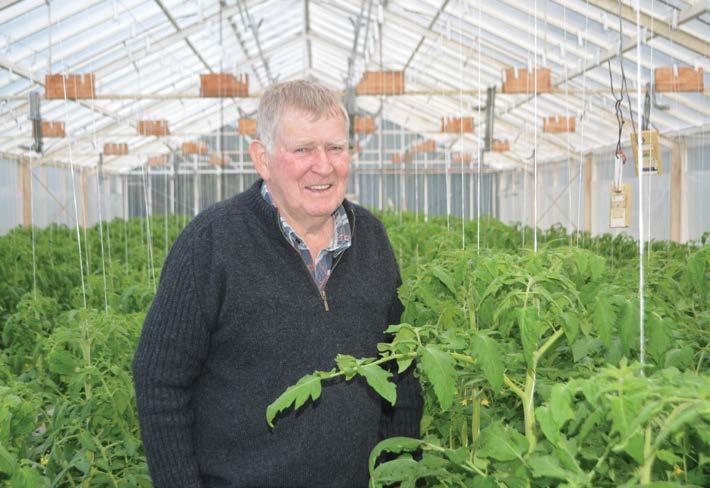
“We spray as little as we can, and we use organic sprays. Our biggest problems are botrytis of course, but also whitefly. We’re always on the lookout for tomato potato psyllid (TPP), but we don’t have huge problems with it. The past couple of years we’ve sprayed quite minimally. I think that’s down to good luck. We’re very clean and very fussy in the glasshouse. Being observant and getting on top of things before they get out of hand really does pay off.“
And the secret to growing flavoursome tomatoes? “Feed them. We do all the things that you’re supposed to do like crop management and registration – measuring the plant, the length of leaves, and all the rest of it. We mix all our own feeds ourselves and when we get into trouble, we ring someone and ask them. Mostly I think it’s the way we feed them. We tend to feed them quite heavily. Our tomatoes do tend to be on the bigger side.
“Ed over the years has become really good at looking at the plants – he can read the plants. It’s observation I think.“ This year they have reduced the number of plants from 3000 to 700 but hope that they will plant more next year if their health allows.
“We usually grow capsicums, Lebanese and telegraph cucumbers, eggplants and beans. We’ve cut some of that out, we’ll grow some cucumbers, but we won’t grow the capsicums and eggplants this year.“
The couple grow cherry, baby Roma, Roma (low acid), and medium table tomatoes. Lyn says people are always after sauce tomatoes too.
“We were lucky because when Covid-19 came, we had just planted our crops, so it didn’t really affect us. For the next shutdown, Farmers’ Markets New Zealand had gone into bat with the Ministry for Primary Industries (MPI) and we [Tauranga Farmers’ Market] became a retail business and could remain open under the same rules as retailers. We voted not to be a vaccinated market, but you had to wear a mask and were limited with visitor numbers for a couple of weeks.“
Selling their produce at the local farmers’ market is a great social outing for the couple, but also an effective way to get feedback from their customers.
“The biggest thing is being able to talk to our customers about our produce and meeting their needs. We prebag a lot of our tomatoes because our stall is so busy, we don’t have time to sell loose. We get good feedback from customers about the product whether it didn’t keep last week, so it’s a good quality control on your product as well. You don’t get that from your broker, you just get told it didn’t sell,“ Lyn says. “We also have people come back giving us jars of chutney and recipes that they use. Along with a few hints, there is quite a bit of discussion of how to use them.“
And more than 30 years later when others have taken up retirement, Lyn says she and Eddie still enjoy growing their crops. “It’s just because we like it. There’s always that challenge to have the perfect crop. It always starts out perfect and then something happens. Every season he says this is my last year. And then we end up planting,“ she laughs.

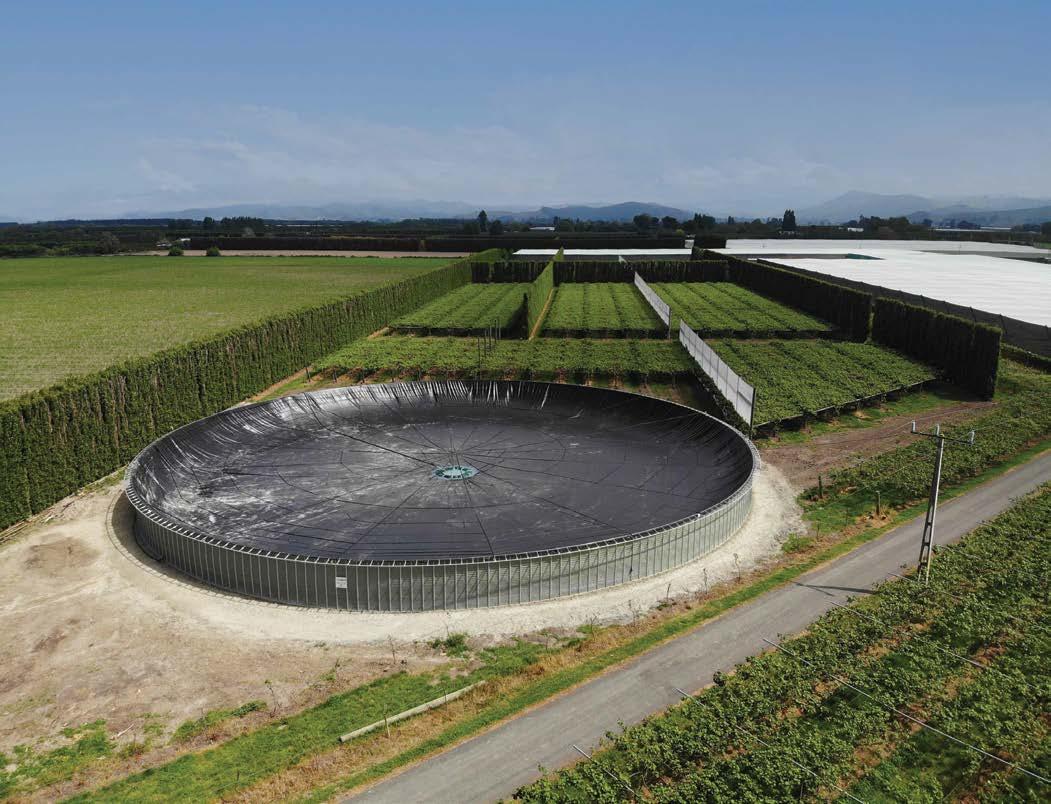
Tomato plants in flower and beginning to fruit


WORKSHOP TACKLES BIG ISSUES FOR COVERED CROP AND TOMATO GROWERS
Glenys Christian and Dinah Cohen
On a grey day in May, undercover crop growers gathered in Pukekohe and online to hear about some of the main issues facing their industry as well as updates on key projects supported by TomatoesNZ and Vegetables NZ.
Barry O’Neil, TomatoesNZ and Horticulture New Zealand chair, opened the workshop by saying, “There have been a lot of challenges and I’ve never seen a season like this. It’s been really, really tough.“
Biosecurity Biosecurity is an issue all growers face with the threat of an incursion always a possibility. Tomato growers have been dealing with the pepino mosaic virus (PepMV), which was found in five sites around Auckland in 2021. Jeremy Thompson, Ministry for Primary Industries’ (MPI) head virologist, has led testing for this virus. He confirmed that when first identified in New Zealand, MPI was able to call on a lot of overseas knowledge as PepMV has been around since the 1970s, when it was first identified in Peru. It then spread to Europe in the late 1990s to early 2000s, and into the United States and South Africa in 2010. Full genome testing showed that one Auckland greenhouse has the CH2 strain (mild) while the other five have the PVX (Potato Virus X) co-infection.
Jeremy is in touch with a Belgian company about testing the effectiveness of a vaccine, which has been used in Canada and the United States, but approval for use in New Zealand would be some time away even if the trials were successful. The good news is that PepMV affects the plant mostly, rather than the fruit, and strict hygiene regimes can limit the spread. The survival of viruses in soil when infected plants are composted is another project that MPI is looking to co-fund with interested parties. Further updates will be given in later issues of this magazine. Seeds are a key vehicle for viruses to travel into the country. Herman van der Gulik, Enza Zaden sales manager, detailed some of the strict measures being taken to make sure this doesn’t happen. “Prevention is better than a cure so seed testing is commonplace to prevent outbreaks. Unfortunately, onshore and offshore testing creates delays, so growers need to plan ahead and order seeds with plenty of notice.
“Buying seeds from reputable sources is also key. Online importing of seeds has no assurance that testing has happened.“ Lex Dillon from A Lighter Touch spoke about research carried out into the use of biocontrols. An article on this topic will appear in the next NZGrower.
Energy and decarbonisation The workshop then turned its attention to the topic of energy and decarbonisation. With most greenhouses heating for at least five months of the year, many small to medium growers are at a loss as to how to manage the rising price of fuel, the added cost of the Emissions Trading Scheme (ETS) payable for fossil fuels like coal, and the push by the government to decarbonise. Insa Errey, from the Energy Efficiency and Conservation Authority (EECA), has been working closely with both TomatoesNZ and Vegetables NZ over the past 12 months to produce a range of tools for growers to make sure their energy use is as efficient as possible. EECA now has a dedicated page on its website for the undercover crop growing industry, where all these tools can be found.
Two growers who have been part of trialing these tools were able to share their experience at the workshop. Canterbury grower, Rob Lindsay, warns that there’s no silver bullet when it comes to reducing emissions. Instead, solutions have to be matched to individual sites, and involve many factors including the energy requirements of the crop grown and fuel source availability – both now and into the future.
In 2018, after a career involved in a range of horticultural enterprises, Rob joined fellow Canterbury grower and
Rob Lindsay in one of his greenhouses

good friend, Allen Lim, to grow telegraph cucumbers under plastic and glass all year round. The old coalfired boilers were upgraded recently to use re-refined oil which burns much cleaner. But Rob realised this fuel source has a limited lifespan so he’s investigating other options. Rob started to look for ways to improve energy efficiency 18 months ago when they tried to identify where the biggest energy losses were. This resulted in him looking at their screens, boiler efficiency and linking the temperature in the greenhouses to the amount of sun at any given time. The efficiency of the existing screens was improved to minimise energy loss through the greenhouse roof. The screen fabric used has an energy rating of 47 percent thermal insulation, with only seven percent shading. “The screens are primarily used to prevent heat loss, so by making small changes to set points within the climate software, we have seen large changes in greenhouse climate.“ Next, Rob looked at the efficiency of the boiler, asking why run the boiler at a high setpoint on a sunny day? Bringing in a consultant, he quickly discovered the boiler controller
could be linked to an external temperature input. “We manufactured our own solar sensor using a cheap temperature sensor inside a milk bottle pray-painted black.“ This replicates temperatures inside the greenhouses on a sunny day, and so lowers the boiler heating setpoint. The total cost came to less than $200. Finally, Rob looked at the idea of linking the greenhouse temperature to the incoming solar radiation, as detailed in Growing by Plant Empowerment, which links plant growth to the incoming sunlight. “Low sunlight means less incoming energy for photosynthesis, therefore we need to slow down the plants’ energy usage, by dropping the 24-hour average greenhouse temperature.“ The result was a saving of ten percent in energy costs in year one and a further six percent in year two.
Energy down, production up One of the biggest surprises in the journey so far is that not only have they managed to reduce their energy use and save money, but production has increased! Rob believes further optimisation of energy use can still be achieved. He’s looking forward to getting an energy audit carried out, with further projects on reducing energy demand involving screens and dehumidification likely to follow. And when it comes to fuel switching from the current waste oil fueled boiler, Rob’s convinced there’s no point switching like for like unless optimisation is very much part of that move.
Chipper alternative Leanne Roberts’ family have been growing leafy greens and herbs hydroponically at their Marlborough property, Thymebank, for almost ten years, and she too shared their decarbonisation experiences. They were using a coal-fired boiler to heat a covered area of 5500 square metres.
They were using a
coal-fired boiler
to heat a covered area of
5500 square metres
Leanne acknowledged that she is lucky to have had a high spec boiler that was relatively easy to convert, and family members who were handy with tools and full of ingenuity. They looked long and hard at switching to the use of waste oil but realised it wasn’t sustainable, so they also looked into wood pellets or chips but were concerned about the vulnerability of their business due to supply issues. “As a result, we set up our own cottage industry with an arborist, so we have our own supply of wood chip. This is a mutually beneficial agreement as the arborist is happy to have a means of disposing of their waste.“
Getting resource consent has been their biggest challenge throughout the whole process. As for costs, they were looking at $250,000 for a boiler conversion to other fuel sources, but as they were able to make many of the changes themselves, the actual cost has been about a tenth of that amount.
“That was really surprising, and the ongoing costs were also a lot lower.“
While the boiler use is slightly higher when it is burning wood compared with coal, it isn’t as high as they had thought it would be.
Voicing grower concerns Finally, growers were able to voice their concerns to two National Party politicians, spokesperson for horticulture Tim van de Molen, and energy spokesperson Stuart Smith. Major concerns are the rising costs of production, including the effect of increasing fuel prices on transportation, the shortage of labour in all areas, and the issue of food security if New Zealand growers can no longer afford to produce fresh vegetables. John Murphy, Vegetables New Zealand chair, closed the workshop by promising to continue discussions with the politicians of both main parties so that the growers can try to influence policy.
If you missed the workshop, a recording and copies of presentations are available. Email Dinah.cohen@
hortnz.co.nz

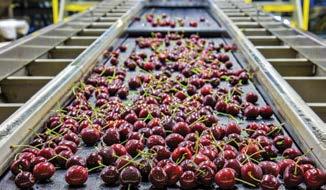
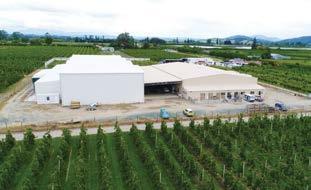


Tuatara Structures are leaders in the design and construction of structural steel buildings, across New Zealand.
Specialising in large-scale industrial, commercial, and agrispace solutions, our team will take the time to understand your business goals and challenges, ensuring we provide a build solution that fits. With fixed-price contracts, free feasibility studies and turn-key design-build outcomes, our experienced team has the capability and mettle to deliver outstanding results every time. We will be at the 2022 NZ Apple & Pear and Cold Storage Conferences', so come say hello, and see how we can help you achieve your business goals.


